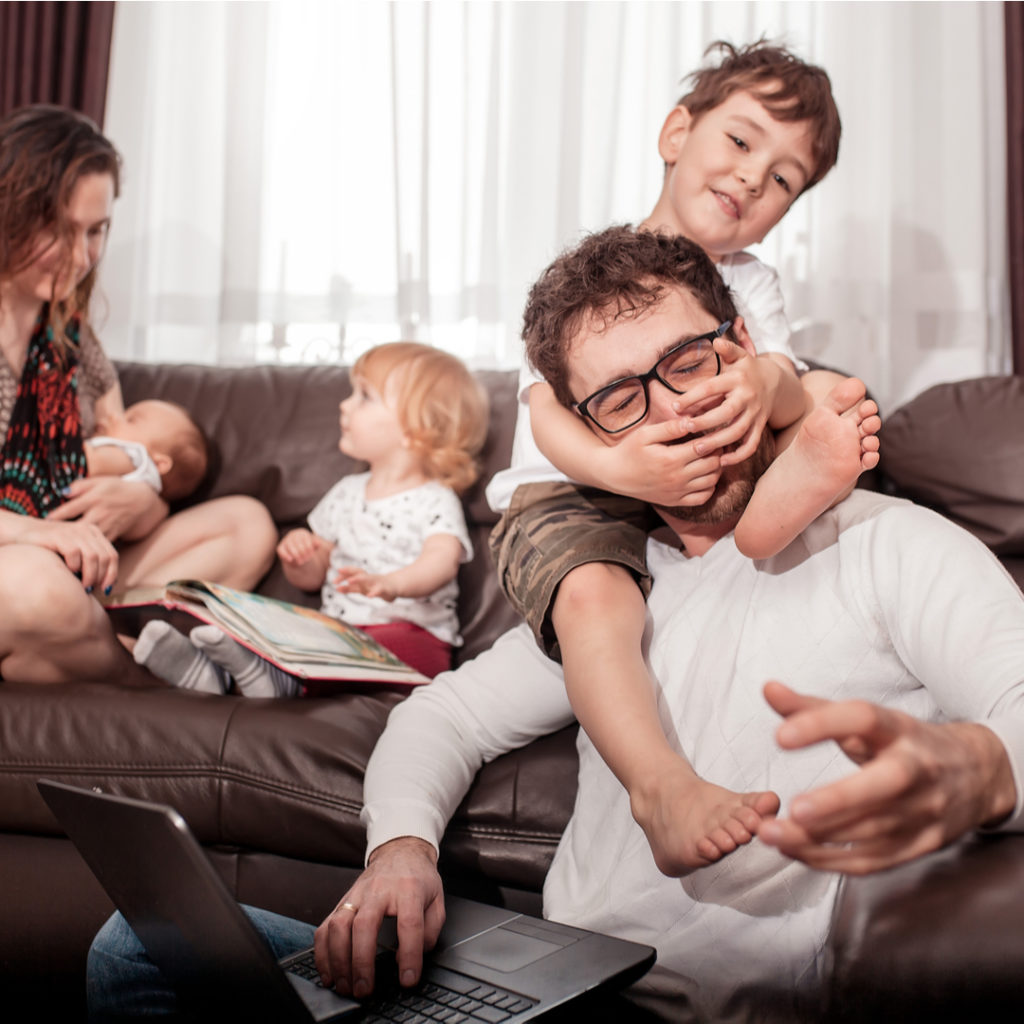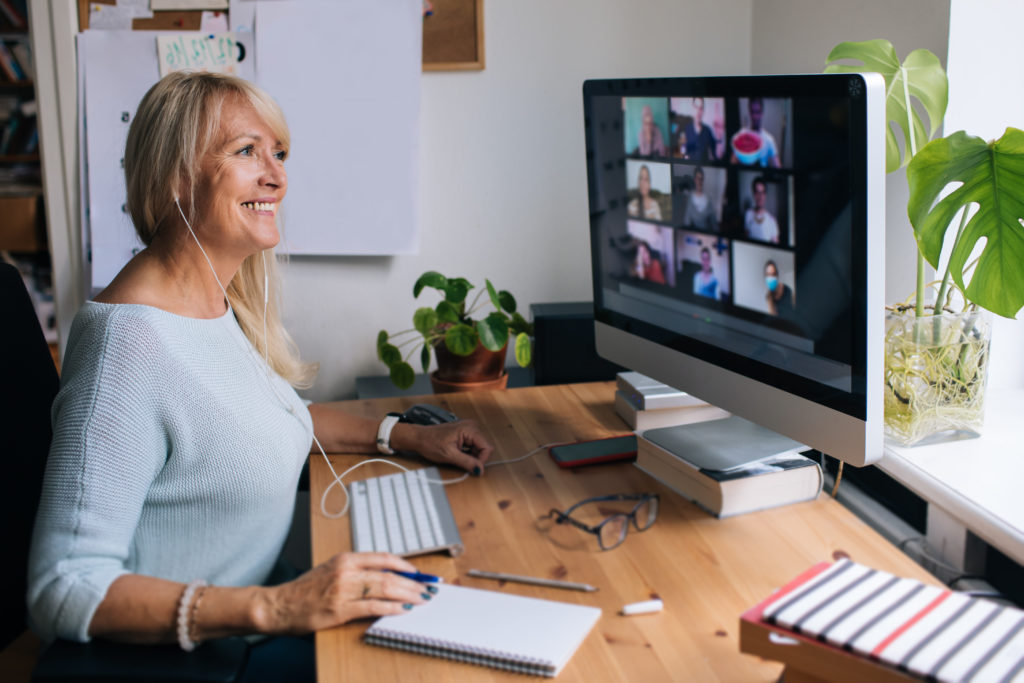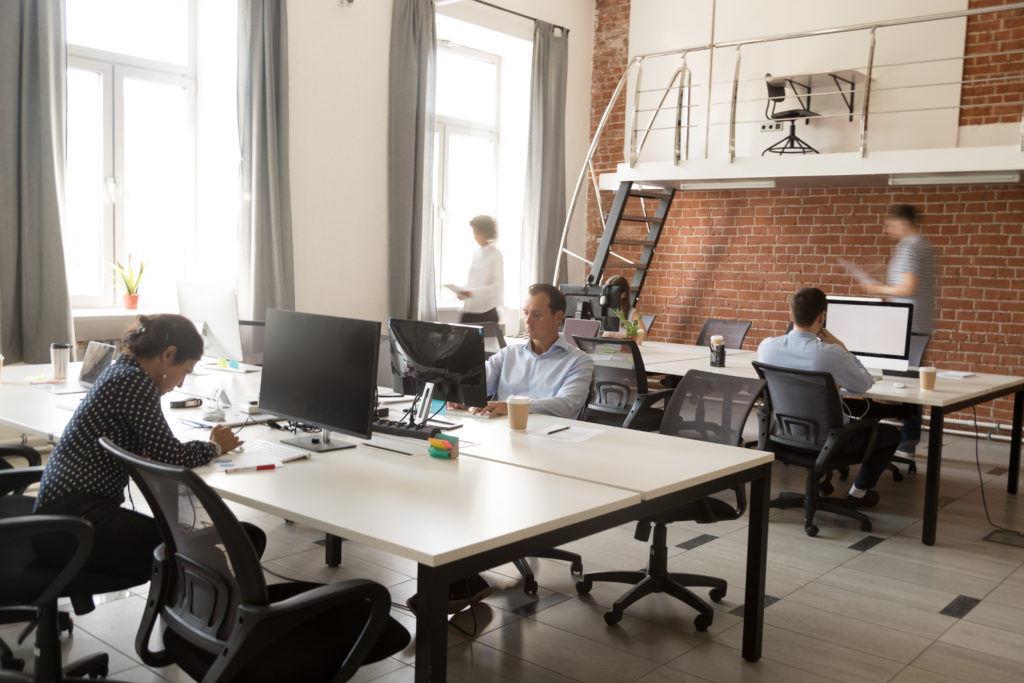We are coming to the end of, what for some, is the 10th month of Working from Home. At first we embraced it – but it is safe to assume that for most, the novelty has well and truly worn off. We miss our colleagues. We miss the chats around the coffee machine. We miss the superfast broadband. We miss the tech; we miss the hardware that allows us to do our jobs efficiently and without impediment.
As we stare down the barrel of 2021 with no real return to the office in sight, it is interesting to consider how else At Home Working has changed the way we operate. If you are a ‘lone wolf’, then maybe working from home hasn’t really changed your day to day. Everything is just the same as it always was. A different set of 4 walls maybe, but essentially the same.
However, the majority of us do not work in a silo. “No man is an Island” – and that is especially true if you work in a creative industry. Pre pandemic, many, if not all, creative professionals enjoyed a close knit working culture. One in which ideas are shared face to face; coffee mugs in hand, over a burger at lunchtime or sat informally around a messy, idea filled white board.

Has at home working put out our creative spark?
Currently, the UK is entering Week 3 of its latest lockdown. Among the many restrictions we are facing, we have been asked to work from home where we possibly can. It has taken a toll. Not only has this been found to negatively impact our mental wellness but recent evidence has also raised concerns that these 3 periods of mandatory “work from home” instruction have impeded our creative flow.
Nicholas Bloom is an economics professor at Stanford University. He has used the lockdown measures here and in the US as material for his latest project; a study of productivity and homeworking. His research has led to discussions with many CEOs and has uncovered that “creativity is the single biggest issue”.
In support of this, a global study of 145,000 workers by Leesman measuring employee experience, found that 28 per cent of homeworkers said they were unable to collaborate on creative work while at home. Coupled with the fact that we are unlikely to return to full-time office based working for some time, are managers facing an escalating problem?
Andy Haldane, chief economist at the Bank of England was able to articulate this last year. He remarked,
“Exposure to new and different experiences — sounds, smells, environments, ideas, people — is a key source of creative spark”. He continued, “These external stimuli are fuel for our imaginations and the imagined, made real, is what we typically mean by creativity.”
It seems that scheduled Zoom meetings are no substitute for a serendipitous conversation whilst waiting for the kettle to boil!

Is this an issue for concern?
Are managers, CEOs and investors right to be concerned?
Probably. Not only does a lack of creative interaction affect a company’s bottom line, it also does nothing for the worker skill set. Creativity is something we need to practice, as is the art of interaction and collaboration. Arguably, as we look not too far into the future we are able to see robotics, AI and RPA take over many repetitive tasks. The traditional work force will primarily perform the tasks unable to be carried out by our mechanised colleagues. Unarguably, creativity is one of these. Without the ability to exercise this creative muscle, will we lose it entirely?
If we dig a little deeper, it seems that a communal workspace and creative sharing is more important still. Discussions within a team equip us with a host of soft skills that are crucial to living and working effectively within a group.
Chris Hirst, global chief executive of French advertising and communications group, Havas Creative puts this perfectly when he outlines what we lose when we can’t bash out ideas in a group. He states,
“Problem-solving requires an element of friction, it requires disagreements without falling out. Much of how we deal with a conflict with somebody is about how they say things, their body language. We are able to moderate our words through a combination of our actions and our words. That doesn’t happen on the screen.”

Domestic Bliss?
If you are one of the millions of at home workers also schooling your children whilst doing your day job, you will be only too aware of how limiting this can be on your productivity. Tasks are left half finished and ideas half researched as we fumble through delivering a ‘lesson’ on fronted adverbials, or even worse long division!
Creativity requires concentration and the ability for one idea to flow into another – something road blocked by domestic responsibilities. One Danish professor has even gone so far as to describe children as “creativity’s terrorists”!
It is not all bad news however…the same academic goes on to suggest that parents tackling tasks outside the normal routine may inspire new ideas. Phew. All is not lost.

Working from home; the flipside.
There has been some evidence to balance out the loss of creativity argument.
Daily exercise
Walking has been shown to be a premium activity in the generation of new ideas. Indeed, a study by Stanford University found that walking enhances creativity. It can be concluded from the research that “When there is a premium on generating new ideas in the work day…..it should be beneficial to incorporate walks.”
Solitude.
In direct contrast to the ‘collaboration is key’ camp, Dropbox chief people officer, Melanie Collins believes the lockdown working arrangements have underlined the value of remote working. She believes that solitude facilitates deep thought and a refined focus that is just as important to creativity as collaboration.
Knowledge is not creativity.
Recent years have seen a change in the design of office spaces to include more communal areas. These shared areas were thought to encourage chance meetings where teams could be built, relationships formed and ideas shared. There is some scepticism over this though. Some state that there is no convincing evidence to suggest that these conversations lead to a creative lift. Instead, it is argued that any increase in productivity comes from the transferral of knowledge. If workers become more productive after a chance conversation, then it’s simply because they have learnt something they didn’t know before.
Virtual discussions.
It has also been asserted that virtual discussions facilitate a greater sharing of ideas. Once again we can look to Dropbox for a commercial example. Last year Dropbox took its annual global Hack Week online for the first time. The virtual sessions resulted in higher cross-department and cross-regional collaboration and more colleague developed projects than ever before; employees created 29% more demos than in previous years. A spokesperson from the organisation remarked that “The dissolution of location-based collaboration has allowed for more varied ideas to bubble up.”
This idea is supported by UK design and engineering group, Arup who found the switch to remote meetings to be a great opportunity to involve more employees across a range of disciplines and locations. The company also found the ability to mix verbal chat with text and written messaging appealed to more people. Arup’s deputy chair, Tristram Carfrae says that,
“Some people prefer different methods of communication. Everybody in a video conference seems to feel able to speak up. When in the physical location, it often refers to seniority. And some people do all the talking.”

The future is tech.
Some commentators have forecast that the future will see technology adapt to foster creativity. For example, one principal researcher at Microsoft anticipates that we will use augmented or virtual reality headsets to “bridge the physical-digital divide and improve both all-remote meetings and future hybrid meetings . . . [could] open up the possibility for engaging with one another remotely that goes well beyond what is physically possible.”
This may also serve to enhance the collaborative process. Such advances could include anonymising contributions so that ideas are judged on their merits rather than the person who presents them. In turn, this could help reduce bias or stop the group from deferring to seniority.
Post covid : What can we expect?
The mass vaccination programme currently underway has allowed us to speculate about the possibility of a return to some degree of office based working later this year. But in practice, what can we realistically expect?
Most thinkers anticipate a hybrid model; one that is a mix of home and office based working. Some predict office spaces will become “hubs” used to collaborate and meet. They will never again be places that 100% of the work force use 100% of the time.
Certainly, creativity will be one consideration in determining how employees spend their days: group problem-solving at the office complimented by uninterrupted focus at home – once the schools return, of course!

How do we get the best from our teams?
This debate is one that managers have long been tackling. How do we forge the conditions where creativity can flourish? The answer does seem to lie in a melting pot of two models. Finnish academic, Prof Rehn puts this best; so to quote him –
“Creativity is a careful balance of generating an idea and working on it, a balance of working together and alone”.
So perhaps the hybrid model is the answer. We need an environment where we can focus our thoughts, develop an idea and then thrash these ideas out with colleagues. Perhaps in so doing, we will end with a finished product that is a blend of two distinct concepts but one that ends as a perfect blend of the two…or three or four.
But is it as simple a conversation as all that? Has the office space become the fall guy for unproductive teams? At the moment, it is especially important to consider environmental factors. The pandemic and its attached anxieties and concerns have caused us to question the most simple of decisions. Just deciding what to spread on our toast some mornings seems a mammoth task. So it stands to reason that our creativity and productivity will also have suffered irrevocably.

Amid a global pandemic we are dealing with stresses over job losses, heavy workloads and social restrictions – not to mention the correct use of a fronted adverbial! Navigating these considerable hurdles is distracting at best and therefore it is entirely unsurprising our creativity is not what it once was.
So has at home working caused the creative fires to burn out entirely or are simply smouldering among the ashes that was 2020? We would like to think the latter. It is a waiting game to see what office work will look like post COVID. Looking at the evidence, it is clear that our individual paths to productive creativity is as diverse as we are. Some will find the communal environment more inspiring, others may prefer the quiet, uninterrupted solitude of at home working. Whatever the next gen model holds, it is clear that our working arrangements will most likely be as affected by the pandemic as the rest of our lives. Let us hope that creativity is not.





